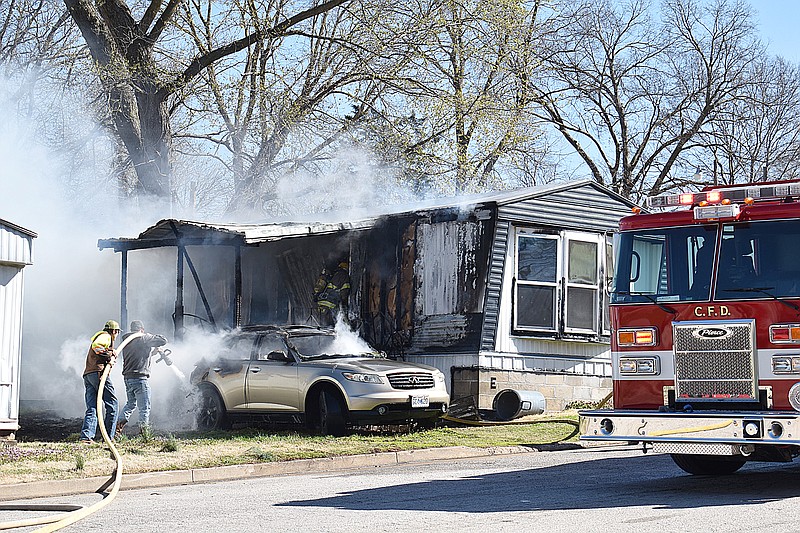As the days grow shorter and colder, many fire departments celebrate Fire Prevention Week in the second week of October to raise awareness of fire safety.
This year, California Fire Department Chief Brad Friedmeyer is emphasizing creating and practicing escape plans -- along with testing smoke alarms.
"Thats a big thing we're trying to push, so everybody knows where to go to get out, and how, and where to meet after a fire or anything like that," he said. "Have a plan and practice the plan of getting out of the house, just in case."
According to a National Fire Prevention Association tip sheet, occupants may only have a few minutes to safely exit a building after the smoke alarm sounds. It added only one of every three households have created and practiced an escape plan. The association recommends practicing fire drills during the day and night twice a year.
It's also important to test smoke alarms and carbon monoxide detectors. Friedmeyer said smoke alarms recently alerted a sleeping family to a fire that later destroyed their home, allowing them to safely escape. Carbon monoxide alarms alert when the toxic tasteless, odorless and colorless gas -- produced by heating equipment, generators, vehicles and other equipment -- is present. Last year, he recommended testing all alarms once a month and replacing batteries in the alarms when adjusting clocks for daylight saving time.
The fire prevention association recommends having functioning smoke alarms in every bedroom and on every level of the home, including the basement. Smoke alarms should be tested monthly, and replaced every 10 years. It also recommended interconnecting alarms, so when one sounds they all sound.
In a smoke alarm tip sheet, the association said roughly 3 of every 5 fire deaths occurred in homes without functioning alarms.
Friedmeyer said California Fire Department has responded to seven structure fires since January, with three of the fires being caused by ash trays. He recommends keeping ash trays and cigarettes away from furniture and other combustible materials. Outside the home, he offers the same advice for barbecues -- keep grills away from vinyl siding and other combustibles.
The main thing, Friedmeyer said, is to keep combustible materials away from activities involving fire -- such as cooking.
Missouri Department of Public Safety's Division of Fire Safety also offered some tips for kitchen fire safety in a recent news release. State Fire Marshal Tim Bean said cooking accounts spark nearly one-half of home fires in the United States. Despite the statistic, he said, most of the fires could have been easily eliminated.
"Let's start with remaining in the kitchen when cooking, protecting against fires that start with grease, and having an easily accessible fire extinguisher in the kitchen," Bean said.
He also shared these tips:
Keep your kitchen and cooking areas clean. Do not let grease build up.
Keep combustible materials away from the stove.
Keep an oven mit and pan lid nearby while cooking. If a small grease fire starts, use the lid to smother the flame. Turn off the burner and leave the pan covered until cool. (Never attempt to use water to extinguish a grease fire.)
Turn pot and pan handles to the back of the stove, preventing accidental spills that can start a fire.
Keep children at least 3 feet away from the stove and areas where hot food and drink is prepared.
Remain in the home while cooking food. Check cooking foods regularly. Use a timer, if needed.
Don't cook when sleepy or drowsy, or are under the influence of alcohol or drugs. "You have to be alert when cooking."
Additional fire prevention and safety tips are available on the Division of Fire Safety's website at dfs.dps.mo.gov/safetytips/, and the fire prevention association's website at firepreventionweek.org. Child-friendly fire safety activities and materials are also available at sparky.org.

